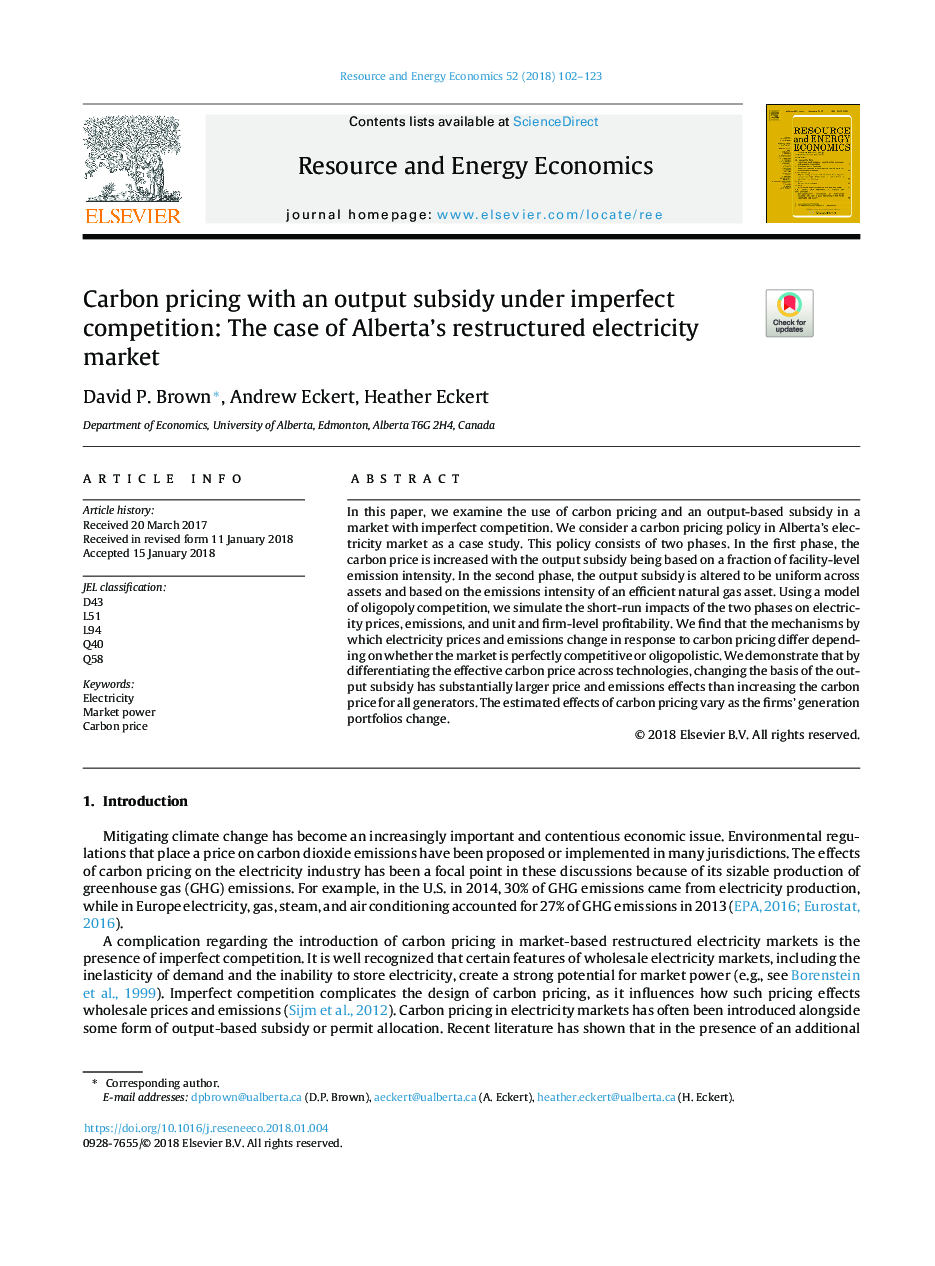| Article ID | Journal | Published Year | Pages | File Type |
|---|---|---|---|---|
| 7387439 | Resource and Energy Economics | 2018 | 22 Pages |
Abstract
In this paper, we examine the use of carbon pricing and an output-based subsidy in a market with imperfect competition. We consider a carbon pricing policy in Alberta's electricity market as a case study. This policy consists of two phases. In the first phase, the carbon price is increased with the output subsidy being based on a fraction of facility-level emission intensity. In the second phase, the output subsidy is altered to be uniform across assets and based on the emissions intensity of an efficient natural gas asset. Using a model of oligopoly competition, we simulate the short-run impacts of the two phases on electricity prices, emissions, and unit and firm-level profitability. We find that the mechanisms by which electricity prices and emissions change in response to carbon pricing differ depending on whether the market is perfectly competitive or oligopolistic. We demonstrate that by differentiating the effective carbon price across technologies, changing the basis of the output subsidy has substantially larger price and emissions effects than increasing the carbon price for all generators. The estimated effects of carbon pricing vary as the firms' generation portfolios change.
Related Topics
Physical Sciences and Engineering
Energy
Energy (General)
Authors
David P. Brown, Andrew Eckert, Heather Eckert,
